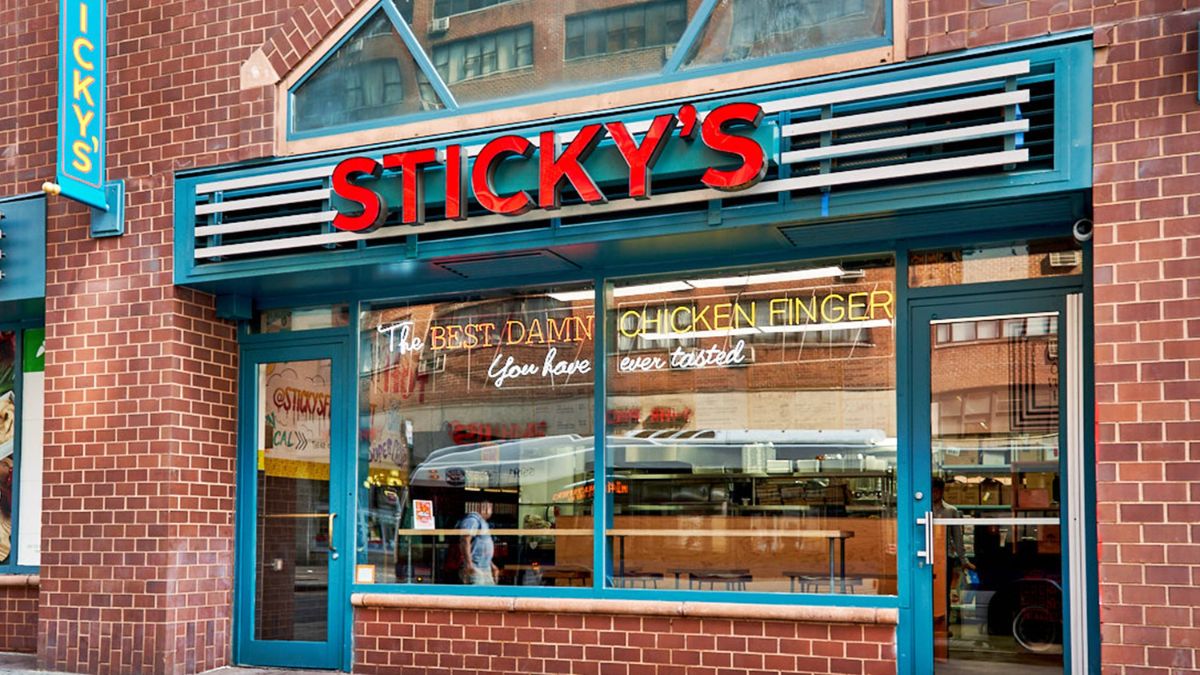
Are you a fan of Sticky’s Finger Joint food? Then we have bad news for you—the popular fast-food chain may be closing several of its restaurants across the country after filing for bankruptcy this past April. Here’s what we know about the locations that could be affected.
Which Sticky’s Finger Joint locations will close?
So far, the company hasn’t specified which branches might shut down this year. However, 12 restaurants are currently at risk, in addition to the three locations that recently closed.
Why did Sticky’s Finger Joint file for bankruptcy?
The fast-food chain filed for Chapter 11 bankruptcy protection in April of this year, in a Delaware District Court. The company cited financial struggles stemming from the COVID-19 pandemic, along with high rent costs and inflation that drove up prices of chicken and potatoes—the brand’s two main menu ingredients.
The company also encountered legal issues, including a trademark dispute with Sticky Fingers Restaurants, based in South Carolina, and a court ruling related to the early termination of the lease for its Manhattan headquarters.
ALSO READ Bornstein Seafoods shrimp recalled due to potential risk
History of Sticky’s Finger Joint
Sticky’s Finger Joint is a New York-based restaurant chain known for its gourmet fried chicken and a variety of creative side dishes, such as fries topped with unique and flavorful ingredients. It was founded in 2012 with the goal of providing New Yorkers with a high-quality, elevated alternative in the popular chicken tenders segment.
The idea for Sticky’s came from the realization that, despite fried chicken’s widespread popularity, there wasn’t a place offering it with the same level of quality, flavor, and creativity. From the beginning, the founders set out to develop a concept that emphasized top-tier ingredients, original combinations, and visually appealing presentation. This approach quickly positioned them as a fresh and innovative option in the city’s fast-casual food scene.
Beyond its culinary offerings, Sticky’s stood out for its irreverent brand identity and laid-back atmosphere. The restaurant design, staff vibe, and marketing campaigns were all crafted to create a memorable, well-rounded customer experience. One of its most talked-about promotions was its use of food porn-style content on unconventional platforms like OnlyFans, aimed at sparking conversation and attracting a young, digital-savvy audience.
However, like many others in the industry, Sticky’s faced significant challenges following the pandemic. Despite its popularity, the chain was unable to fully recover from the economic and operational impact of lockdowns. As a result, it filed for Chapter 11 bankruptcy and has since closed most of its locations. It is currently undergoing restructuring in an effort to remain competitive in an increasingly difficult market.
Sticky’s Finger Joint Menu
While the chain specializes in fried chicken, it also offers a range of other items—including more than 16 types of house-made sauces. Here are some of the products available at their restaurants:
- Chicken Fingers
- Chicken Poppers
- Vegan Fried Mushrooms
- Sandwiches
- Wraps
- Fries
- Drinks
What is Chapter 11 of the U.S. Bankruptcy Code?
Filing for bankruptcy protection under Chapter 11 means that a company is on the brink of ceasing operations, but believes it can recover its success if given the opportunity to reorganize its assets, debts, and business operations.
ALSO READ Where will Father’s Day food deals be? We’ll tell you
By filing under Chapter 11, the company seeks protection from creditors while restructuring its business and debt. This type of protection is available to corporations, individual entrepreneurs, and partnerships. Under Chapter 11, the company’s management continues to oversee daily operations. However, major business decisions must be approved by the bankruptcy court.
Who can seek protection under Chapter 11?
U.S. law allows any company or individual with a domicile, business establishment, or assets in the country to request judicial supervision to restructure their finances and operations under the provisions of Chapter 11.
There is no minimum or maximum value for the assets of a foreign company in the U.S. to be eligible for Chapter 11 protection under U.S. Bankruptcy Law. In certain cases, deposits held by the legal firm managing the process in the U.S. may be considered assets, making the debtor eligible to seek Chapter 11 protection.








